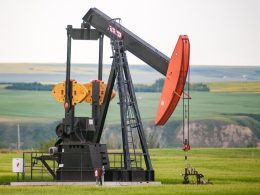Global crude oil and liquid fuel consumption grew at its second-fastest pace in over three decades in 2010, rising 2.8 percent to 86.7 million barrels per day, according to the U.S. Energy Information Administration (EIA). In fact, worldwide oil consumption surpassed 2007 pre-recession levels.
For 2011 and 2012, the EIA forecasts that, around the world, we’ll use an annual average of 1.6 million barrels of oil per day. The EIA says this increase is expected to be driven by rising demand from the emerging world, mainly China, Brazil and the Middle East.
While Chinese oil consumption growth is expected to slow from the blistering 13.1 percent growth the country experienced in 2010, China is still expected to see a 6.6 percent growth in consumption this year. By 2015, the International Energy Agency (IEA) estimates that the use of oil in China will increase some 70 percent from 2009 levels, accounting for 42 percent of global demand over that time period.
One key driver of the increase in oil consumption is the continued rise in economic wealth of China and other emerging countries. Historically, the amount of oil consumed per capita is strongly linked with the country’s GDP per capita.
 This chart from Barclays compares selected Asian countries’ use of oil over several decades by their population and GDP. You can see that Chinese per capita oil consumption is well behind the pace of its Asian peers when they had a comparable level of GDP per capita.
This chart from Barclays compares selected Asian countries’ use of oil over several decades by their population and GDP. You can see that Chinese per capita oil consumption is well behind the pace of its Asian peers when they had a comparable level of GDP per capita.
Currently, China’s GDP per capita is just over $5,000 on a purchasing power parity (PPP) basis. That translates into consumption levels of just over 2 barrels of oil per person, per year. At the same PPP levels, Japan (over 18 barrels per person), Taiwan (about 6 barrels per person) and Korea (just over 4 barrels per person) consumed much larger amounts of oil at a similar level of GDP per capita.
Barclays says that China’s per capita oil consumption would have to increase nine-fold from 2010 levels in order to match that of the U.S. and India’s would have to increase 23 times what it was in 2010. If this were to happen an additional 170 million barrels a day of production would be needed to meet demand.
Considering the U.S. roughly consumes as much oil, in terms of total consumption, as the next five highest oil-consuming countries (China, Japan, India, Russia, Germany) combined and China has over 1.3 billion people, it’s doubtful we’ll see this come to fruition any time soon. However, China only needs to catch up with the likes of South Korea or Taiwan to put a severe strain on global oil supply.
 This means that the global oil market will remain tight for the extended future. Barclays says “relative to other sectors of economic activity, oil has become scarce, implying a need to divert ever larger shares of total economic resources into the exploration and recovery of oil.”
This means that the global oil market will remain tight for the extended future. Barclays says “relative to other sectors of economic activity, oil has become scarce, implying a need to divert ever larger shares of total economic resources into the exploration and recovery of oil.”
Watch Evan Smith discuss ways to play higher energy prices with Margaret Brennan on Bloomberg’s “In Business.”
Purchasing power parity (PPP) is a theory of long-term equilibrium exchange rates based on relative price levels of two countries.
![]()













